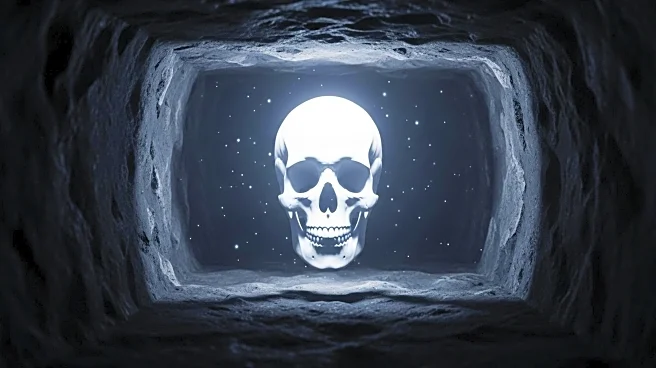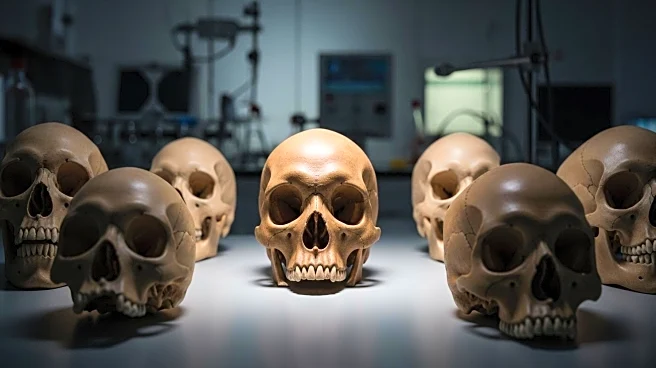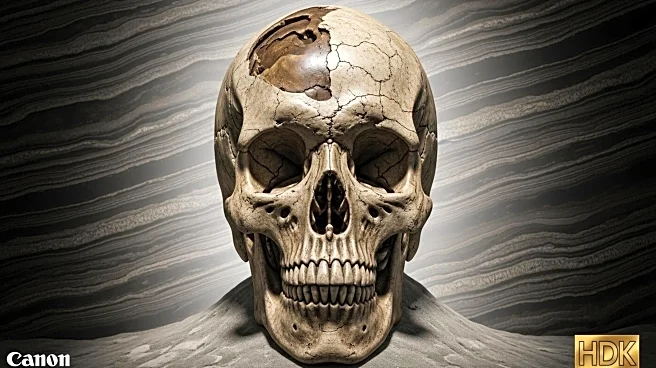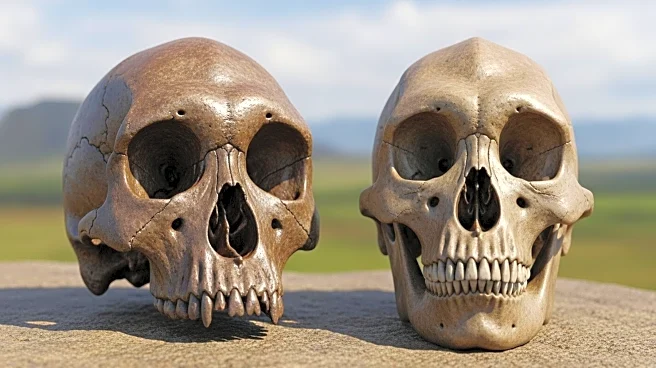What's Happening?
Recent findings suggest that Denisovans, an ancient human species, may warrant classification as a distinct species. The discovery of a thickset skull in China, associated with Denisovan DNA, provides evidence of their unique appearance. This development challenges previous reluctance to categorize Denisovans separately due to their interbreeding with Homo sapiens. The skull's distinct features support the argument for species status, offering new insights into the evolutionary history of humans.
Why It's Important?
Recognizing Denisovans as a distinct species could enhance understanding of human evolutionary development. It may provide insights into the behaviors and adaptations that allowed Homo sapiens to outcompete other human species. By comparing Denisovans with modern humans, researchers could gain a clearer understanding of early human behavior and development. This classification could also refine the narrative of human evolution, highlighting the complexity and diversity of ancient human species.
What's Next?
Further analysis of Denisovan fossils and DNA may reveal more about their interactions with other human species and their role in human evolution. Researchers may continue to explore the implications of this classification, potentially leading to new theories about the evolutionary pathways of Homo sapiens. This could involve interdisciplinary studies combining genetics, anthropology, and archaeology to build a comprehensive picture of human ancestry.
Beyond the Headlines
The potential classification of Denisovans as a distinct species raises broader questions about the criteria used to define species in evolutionary biology. It may prompt discussions on the significance of interbreeding and physical characteristics in species classification. Additionally, it highlights the ongoing efforts to understand human evolution, emphasizing the importance of fossil discoveries in shaping scientific narratives.












